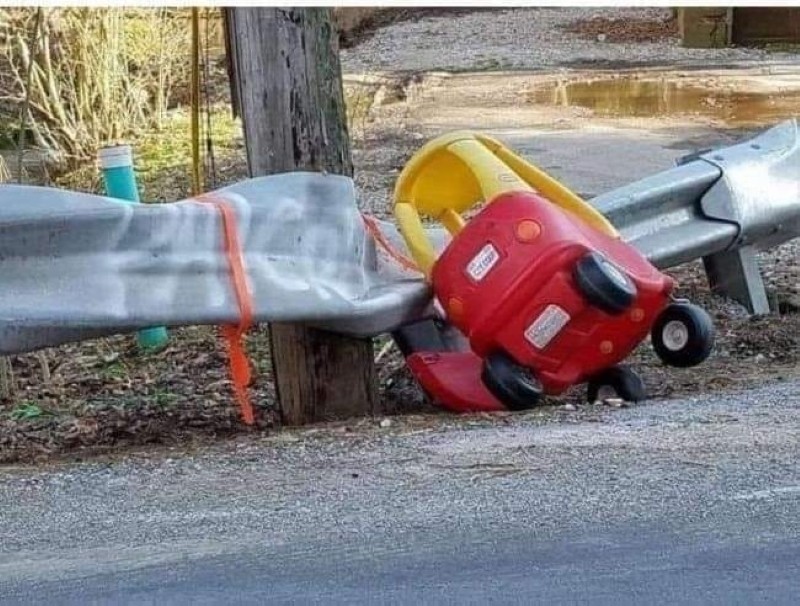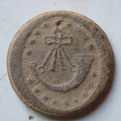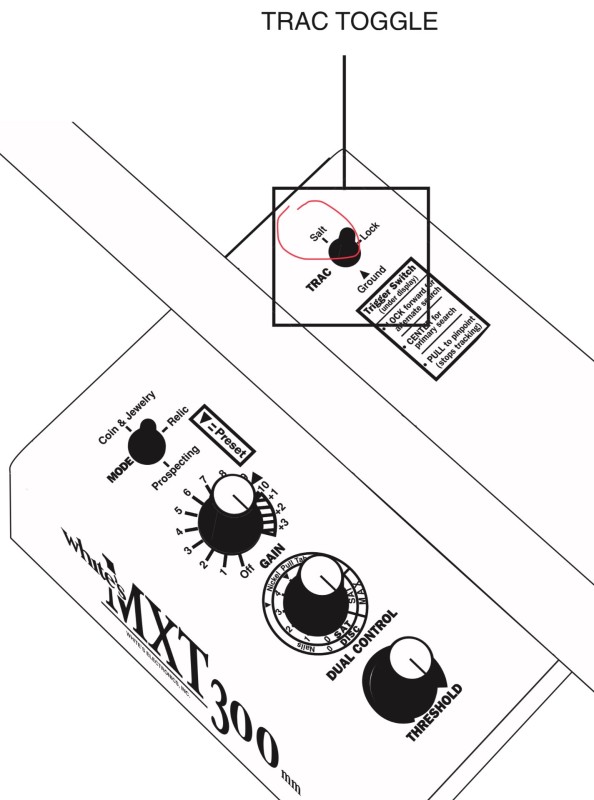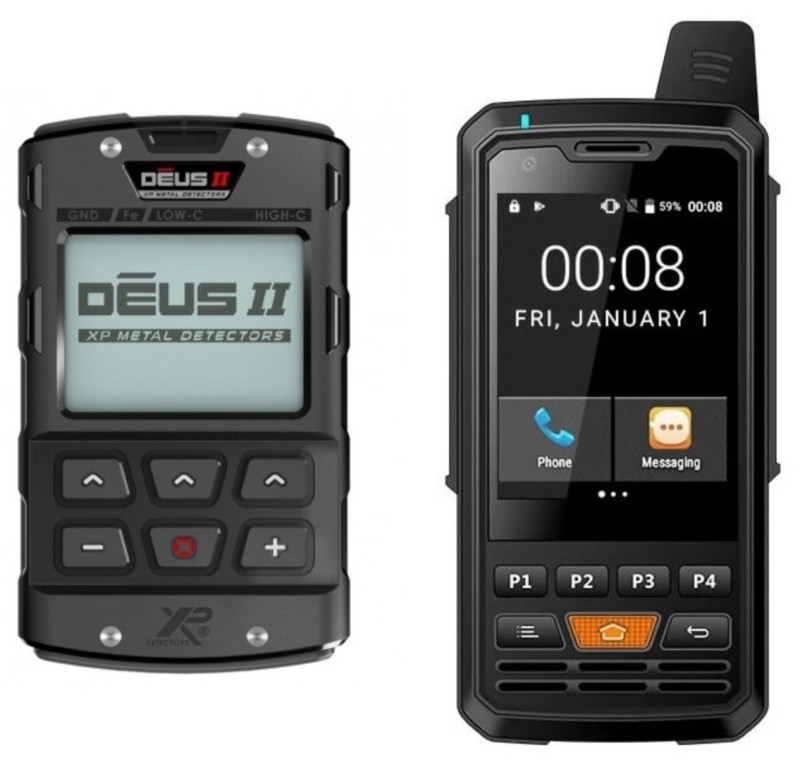Search the Community
Showing results for tags 'detector tech'.
-
I had read in Bruce Candy's autobiography that some of the amplifier circuits he developed before coming to Halcro measured interference in the millionths of a part. Does anyone know if these super fast new detectors are approaching that level of efficiency? I'm trying to figure out how they do what they do... ...probably a dumb question...not my first...nor last...😆 cjc
-

We Need Tougher Plastics For Detectors & Coils
geof_junk posted a topic in Detector Prospector Forum
-
Here is a question for people who have had years of experience with using, selling, or engineering detectors. Has anyone ever heard if strong magnetic fields, say from a rare earth magnet on a pick head, bumping into contact with the control box have any potential for altering a detector’s performance? I didn’t think of this until I was scratching my head trying to figure out why I kept hearing lightning spikes on an otherwise on a crystal clear day. 😅
-
Can someone explain how one nail can blind a person from seeing lets say a silver dime in test situation yet I have found coins with nails in the plug or in the hole close to the coin often in the wild. Actually the first silver I ever found with the Equinox was a almost slick SLQ. I got 30-32 signal and there were nails in the plug and hole. The quarter was still in the hole. This was 6"-8" deep. I even found another decent size nail in the hole before I found the quarter. The guy standing over me said it's just a falsing nail when I pulled it out. I said no the numbers were solid quarter, and then sure enough found the quarter. It has messed with my head that I can ever find anything when I see test that apparently blind a detector so easily. That's one reason I don't have much faith in any made up test.
-
To be clear here I am talking genuine multifrequency. Not selectable frequency misleadingly labeled as multifrequency, so we are now supposed to say “simultaneous multifrequency” or SMF, to differentiate. Sorry, I’m calling BS on all that. Selectable frequency machines are still running in a single frequency. Just because you can pick the frequency is not new. Been around for decades! When I say multifrequency detector I mean multifrequency detector, a detector comparing two or more frequencies to get a desired result. I don’t need to change my thinking. Marketers need to stop calling selectable frequency machines multifrequency. It’s misleading, I’m not playing along any more, and handing out thumbs down to those that continue to do it. Machines are either single frequency or multifrequency. If you want to your your single frequency detector as being able to select frequencies, fine. But quit calling it multifrequency. Even Minelab never stooped that low, and they had single frequency detectors that allowed you to select frequencies, far before most did. So what was the promise? Or more accurately, the hype, of multifrequency? It has been that multifrequency detects all targets, large or small, high conductor or low, all at the same time. As opposed to single frequency, where each frequency is strong in one way, but weak in another. To this day I see this said in marketing, and I constantly see users repeating it as some kind of fact. More BS. As anyone who follows this should know by now, the underlying frequency mix still rules. Minelab calls it “weightings,” where each mix is weighted higher or lower frequency, depending on the desired end result. So we have high frequency weighting for gold prospectors, and low frequency weighting for saltwater, as the most obvious divide. Multifrequency does have an inherent strength over single frequency. Comparing at least two diverse frequencies gives more ground and target information to the system. This, in particular, generally results in better target id capability. There also is a very real ground handling advantage on mineralized saltwater beaches. But you can’t make multifrequency detector that runs in all frequencies at once, that will do the best on everything everywhere. If so we would not have all these different modes, Park, Field, Beach, and Gold. The end result is not much different than a selectable frequency detector. You have high frequency mixes, or medium, or low. Each serves a purpose. I still have to choose frequency modes, and it hardly matters if I am saying high single frequency for nuggets, or high frequency weighted mix for nuggets. If people were not told different, they would not actually know it is any different, except for the extra target id and ground handling capability. So stop with the “multifrequency finds all targets across the entire range” nonsense. There is no multifrequency detector made that runs in one mode, and hits tiny gold nuggets, while also working perfectly well at the beach. That’s what we are being sold, and it’s simply not true. This is from an old post of mine about Equinox, and it’s what we really have: Hottest (more sensitive to small targets, hot ground/rocks, and saltwater) 1. Gold Mode 2. Park Mode 2 and Field Mode 2 3. Park Mode 1 and Field Mode 1 4. Beach Mode 1 5. Beach Mode 2 Least Hot (less sensitive to small targets, hot ground/rocks, and saltwater) Now seriously, just how different is that from a range of selectable single frequency, high to low? What I’d to see is all this incorporated into a simple variable control. Instead of discrete modes and complicated explanations, give me a single control. Setting higher sets for progressively higher frequency mixes, setting lower goes to lower mixes. You simply set the control as high as your ground allows, which is basically they way we pick between the modes above anyway. Simplistically using my little chart above the control would have 5 - 7 levels. I think attaching names to the modes misleads people anyway. There is no reason not to use Gold Mode to Relic hunt, or Beach Mode to hunt silver coins, but people get locked into thinking those mode names mean way more than they do, and I think some peoples detecting suffers as a result. Get rid of the names, and it frees your mind to a more open approach as to which modes work best under and given circumstance.
-
Yesterday while detecting in mostly dirt, I got at least 5 good repeatable signals and just couldn't find the nuggets. My brother was with me with his GB 2, so I had him go over one of the signals and sure enough it was a small pellet sized nugget. I'm pretty sure now, that I was experiencing the well-known "Halo Effect" and after disturbing the soil, the nugget was just too small for me to pinpoint it. My Garrett Pro-Pointer wouldn't pick it up either. This is good to know and another way to keep getting those nuggets. The 6000 is amazing and despite its "turn on and go" reputation, I'm learning a lot with each outing. Will be interested in seeing any new coils that are coming down the pike.
-
A huge ruckus developed recently over the new Nokta Legend, and a debate over the desirability of an iron bias control. One main argument against such a control came up repeatedly. It’s too dangerous to include. The thought is it could be misadjusted by people who don’t know what they are doing, so it’s best left off. Really? The sensitivity/gain, if set incorrectly, can cause lost targets. Disc settings when set wrong, can cost lost targets. Recovery speed, if set wrong, can cost lost targets. Set the volume too loud, you can damage your hearing! I could go on, but I think I’ve made the point. Any control worth having will cause issues if set improperly. So will sweeping too fast or too slow, coil too far off the ground, etc. There is nothing especially different, or “more dangerous,” about the iron bias control, than any other control on the detector. Long story short, I’m not a fan of dumbing stuff down just because some people will not bother how to learn how to do something correctly, and mess with things they know nothing about. We have default settings for people who do not know what a control does, and they should not mess with the default, unless they know why they are doing it. And if they do, and they miss stuff, frankly, that’s on them. Don’t make people who do understand what they are doing pay the price, for those who don’t care to learn. They have plenty of models to choose from, while full featured models are few and far between.
-
I just watched a video made by metal detecting NYC and the other guy that he was detecting with used that break in the threshold as an indicator of a good target. And it turn out to be was deep too. What actually does that break do? What is it blanking out on? Without getting into specific detectors, do any of you use that as part of your analysis of a target. I do know what threshold his but never did much with it as I have very bad hearing and any other sound (or lack there of) makes it even more difficult for me to hear good signals.
-
I’ve been watching and reading about iron bias just trying to figure it out and what benefits it might have and so on. I started playing with it on my equinox. I’ve got quite a bit of time on the equinox and settled on fe3 back shortly after they came out. Recently I thought I’d play around with it some and see what happened. Well, I wasn’t really to impressed with it and have since gone back to what I know. Original fe3 which from what I’ve gathered isn’t much iron bias at all. I don’t dig many bottle caps at all and if I dig big iron it’s because I’m trying to make a bad sound into some thing or hoping there’s a good target mixed in. I’m really not expecting anything good but I dig a lot of holes just to see what the sound was. Now I’ve got the Legend with a preset iron bias. I really didn’t know what to expect but they said “try it out “ so I did. I’m not sure where or how it’s set but I’ll tell you after this mornings hunt I doubt I’ll do the iron bias update. I went to an old farm site this morning that we have hunted a lot. Non ferrous targets are hard to come by and yes there is a lot of iron. I’ve personally hunted it with the deus and equinox and the area I hunted today has been walked over a bunch. I dug ten non ferrous targets and was just over thirty feet from the car. It was like it hadn’t been hunted…almost lol I guess the use it, set it, hunt it and learn what it’s saying has worked for me on the equinox. I don’t change the settings much at all now. I’m thinking the legend might be the same way. I’m no expert but I do find a few things. Love this hobby. Thanks for reading. Good luck and HH!!
-
I know there's already a bunch of stuff written on iron masking. But there might be some new readers that could benefit. Over on Monte's forum I started a discussion on iron masking didn't get a lot of response but Monte did write some very informative responses if you want to visit the topic on his site it's under the relic/old site hunting section. Here's the video. Would love any additional comments on the subject if anyone would like to interject. I'm no expert and certainly don't know everything about every metal detector out there so I'm open to any constructive criticism or comments.
-
So I’m a at pro user for years picked up a simplex cheap so giving it a try so prob I’m having is it seems no matter how the depth meter shows the targets don’t seem to match for instance 2 arrows on depth indicator and for two different targets both two arrows one was not far from top of plug the other along with a few others as well were well over 4-5 inches so basically I’m wondering how accurate the depth meter is on my at pro it’s very accurate and tells me so I kind of kno how deep to make the plug this one different story maybe one of you guys can chime in with more experience thanks so much
-
There is a debate on another forum about ground balancing a detector this was stated by another poster A POSITIVE ground balance means that the machines threshold INCREASES in volume as the coil is LOWERED TO THE GROUND. A NEGATIVE ground balance means that the machines threshold DECREASES as the coil is LOWERED TO THE GROUND. To achieve a NEUTRAL ground balance you want the machine to do NEITHER as the coil is LOWERED TO THE GROUND. For best results, especially for beginners who might be reading this…you want the machine to be SLIGHTLY POSITIVE…the machines threshold should INCREASE VERY SLIGHTLY as the coil is LOWERED TO THE GROUND. Again…absolutely no disrespect, but this is how this subject has caused SO much confusion over the years. People who have spent hundreds or thousands of hours running a metal detector STILL don’t know the basics of how they work. And ground balancing is about as basic as there is. I just do NOT understand how this can be. can someone explain to me what the purpose of ground balancing a detector as I know what I have been told but just want to make sure I am understanding it correctly this was stated on another site but to me it does not seem totally correct or is it correct everything I understand about ground balancing it does not have anything to do with the threshold or does it just trying to clear this up in my mind
-
Prompted by one of Abenson's recent posts (including link and discussions on Monte's site) I decided to BYO and do some testing myself. Here's my build: Template on the left. That came from Monte's .pdf. I'm pretty sure my printer got the scale correct. I will point out that 20d nails (the big ones) have a length tolerance of +/- 3/32" (+/- 2.4 mm) and Monte's appear to be on the low tolerance end with mine on the high end, but hopefully that doesn't matter much if at all. My board is 1/2" plywood and the two coin recesses have USA small cent diameter. Nails are epoxied in place, slightly (~1 mm) recessed. I've read Monte's document 3 times and still have some questions/uncertainties which have led to this post. My first question probably has an obvious answer given that (from his document) he created this test based upon an actual ghost town site discovery with these locations of nails and an Indian Head Penny at coin location #1 (center). My question is: how close to the board are you supposed to swing the coil? I took the board outside for my first test -- no coins at all to get a baseline. Minelab Equinox 800, 11" coil, EMI canceled, ground balanced, Park 1 custom 5 tones, Recovery Speed = 5, Iron Bias F2 = 0, sensitivity/gain = 17, no discrimination (i.e. no channels notched out). Swinging as close to the board as I could get I heard non-ferrous signals from one or two directions. I could 'cheat' and look at digital TID's, but from what I've read this is supposed to be an audio only test. So how do I proceed and determine (once I put a coin on the board) if I'm hearing the coin or the falsing nail signals? I don't think simply creating a threshold to eliminate the nail falsing is a reasonable solution in this case (as you would do for an analog detector such as an early Tesoro, from what I understand). I could be wrong on that, of course. Again, I didn't look at the digital TID, but my lowest channel (including ferrous) ends at +5 and it was above that.
-
A question for the pros here. I was watching a treasure hunting show and they were looking for a lost mine using a Whites TM 808 Treasuremaster which they claimed could detect gold or silver deposits down to 20 feet. I will preface this by saying I know about mining with excavators, trommels, & sluices but no nothing about detectors. What I am interested in is something that could detect large, concentrated gold deposits of 50 ounces or more that I think are buried in a rich faultline. The depths could be several feet or much deeper. Some of these deposits I suspect could be in the hundreds of ounces or more. Are there detectors capable of this & if you own one I would be interested in talking with you. Thanks.
-
Gold targets overlap the ground balance range, and eliminating either salt or any ground, eliminates a certain class of gold target. In PI nugget hunting circles this is known as “the hole”, when nuggets get eliminated by a certain ground balance setting. This happens with low end targets like a small gold nuggets, thin gold chains, single post ear rings, and broken gold rings. The results you get depends on the ground balance or salt elimination settings (when available - many detectors have a salt setting, most do not). You can air test for this by using a single digit target id item, and testing with salt balance on or off. Also test same item, running ground balance to both extremes. Test both settings separately, and in combination. Note that at certain ground balance settings the item may get weaker, or disappear entirely. This does not apply just to small targets, but any target that has a weak signal. Any large item buried deep enough becomes a weak signal, so in theory all targets regardless of size are affected by this, if they are at fringe detection depth. Single frequency detectors without a salt setting can balance to salt, or to ground, but not both at the same time. Whether they can balance to salt depends on how far the range of the ground balance control has been extended. A machine that is ground balanced to eliminate a salt response may get a weaker, or no response, to many single digit id targets. Multi frequency machines can eliminate both salt and ground at the same time, but this can actually work against you, by doubling the chance of some targets being missed, as you now have two “holes” to deal with instead of one. Advanced processing can compensate for this to some degree, however, by comparing results in both channels, and accepting targets that exceed certain parameters, bringing some missed items back into the game. This stuff can get tricky and complex on the processing side, invisible to all but the engineers who designed the circuit. What this means is a person on a low mineral locations will see different results that people in high mineral locations, not just because of the mineralization, but because the more aggressive ground cancellation settings may be affecting the target. Most metal detector testing and reporting is inherently flawed, because people do not report Fe3O4 results, and use ground balance settings as a flawed methodology for determine how bad the ground is. Comparing detector results without knowing the exact ground composition is a crap shoot at best, and often almost a waste of time. A White’s MXT example, many machines similar…. From the manual: The Salt position provides an extended ground balance and tracking range to compensate for conductive salts also called alkali. Ground rejection against salt/alkali slightly overlaps the lower end of the conductive target (metal) range. In other words if you ground balanced against significant salts, some loss of sensitivity to lower conducting metals (metals low on the VDI target scale) can be expected. The advantage and performance improvements of rejecting the salt, however, far outweighs any loss. Because the Salt TRAC setting can track well into the target range it is not recommended for normal conditions, only for areas known to contain salt. Salt water beaches for example or alkali desert regions. The Ground setting will not track into the nonferrous metal region. The Salt setting will. The MXT 300 ground rejection system is capable, in both the Ground and the Salt settings, of considering some iron a ground mineral. (Emphasis added). More on gold and saltwater
-
With what has come out now, they have to push the limit of vlf or maybe something new. Can vlf be pushed anymore than it has already. I can imagine with what has come out, that they might have to rethink what they're working on. The top end detector competition is getting tough. It's time for something different than vlf.
-
If Dimitar did get his patents which were pending sorted does the XP D2 infringe on any of these ? it seems that the performance increases of the D2 over existing units is because of the separate salt balance that it has like the Tarsacci MDT8000 unit uses. Maybe Dimitar only got the patent (if still not pending) for single frequency separate salt balance (Mixed Domain?) and XP have filed for the multi frequency patent? or is Mixed Domain something else other than just separate salt balance ?
-
I've been a user of SMF detectors since they were first introduced waaaaay back in the early 90's with the Fisher CZ-6 and its' competitor, the Minelab Sovereign. I went with the CZ-6 because it was in a better package. CZ-6, CZ-6a, Explorer XS, Etrac, Equinox 800, and now waiting on a Deus 2. I have a lot of years on them. There have been endless discussions on the marketing vs real world frequencies actually used. All that aside, I ask these questions for a couple friends - Below are some of the claimed benefits i hear related to Simultaneous Multi-Frequency. If true, how? How does simultaneous multi-frequency impact / improve dealing with the ground signal? How does simultaneous multi-frequency impact / improve dealing with a salt signal on the wet salt water beach? How does simultaneous multi-frequency impact / improve Target ID at Depth? Any other claimed benefits I left out ? I will direct a couple pair of eyes over here to evaluate your responses. Thanks, UtahRich -
-
Most of the sites I hunt have very mild ground. I typically leave my GB at 0 most of the time. When I do take the time to Ground Balance, I usually get single digits with occasional numbers in the teens. Do the GB numbers reflect the levels of mineralization in the soil? Do soils with high mineralization have higher numbers? The manual says nothing about it.
-
Hi, I think of buying the Quest Scuba Tector Pro (https://www.amazon.com/Quest-Scuba-Tector-Metal-Detector/dp/B08HQYH81T), it is a Pulse Induction detector, i intend to use it on land so i need more depth hence i want to build a 15 inch coil for it, by measuring the inductance of the stock coil and building a 'similar inductance' big coil, will it work? also, does the pulse power also affects the depth, i guess from the small battery and the advertised 14 hour life that it is using less power per pulse, if power maters then will using a 20% lower resistance for the new large coil (thinner wire) help force a bigger current and consequently more power (assuming it is driven by a voltage generator)? note: I know i can find many similar models with big coils but for some reasons am limited to this particular detector and I want it to find gold jars 3 foots in mineralized ground
-
Hi, in my country it is difficult to get a permit for a metal detector so I was thinking of using a pipe & cables locator to find gold. the problem is I can't buy from Ffisher or Whites or any company that also makes metal detectors as it will be recognized and confiscated by customs. but I can buy detectors meant purely for utility like the Amprobe AT-3500. my question is can I align the transmitter and receiver perpendicular on a bare like the gemini 3 or similar devices? I mean to cancel the interference between the receiver and transmitter?
-
The whole depth with single frequency VLF detectors thing in my opinion has been nothing but a red herring for decades. I have read a thousand posts from people wanting VLF detectors with "more depth". Yet VLF detectors maxed out for usable depth by at least 1990 if not before. I have not used any single frequency VLF metal detector since 1990 that got more depth on coins than my old Compass Gold Scanner Pro. The only real improvement we have seen and are still seeing is in the ability to find and correctly identify items that are masked by the ground itself or adjacent undesirable targets. There are an amazing number of targets in the ground at depths achievable by any decent detector made in the last 25 years, but that are being missed because they are improperly identified and ignored, or just completely masked and invisible. This is an area where the Minelab BBS and FBS detectors have excelled. They do not go deeper. They simply get more accurate discrimination at depths exceeding what most detectors achieve. Machines like the DEUS and a lot of other Euro machines are excelling not for the depth they get, but this ability to acquire and accurately identify targets at shallower depths that are missed by other detectors. If we had a detector that could simply see through everything and accurately identify coins to 10" the ground would light up with countless missed finds. I get a chuckle out of all the deep coins I see people talk about on the forums when the best detectors made can't accurately identify a dime past 5-6 inches in my soil. Anything deeper just gets called ferrous. There is huge room for improvement in metal detectors still not by getting more depth, but by simply finding shallower targets that have been missed by other detectors made up until now. How To Make Yourself Crazy! U.S. Versus Euro Style Detectors
















